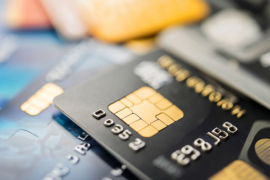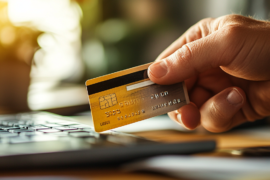This article may contain references to products or services from one or more of our advertisers or partners. We may receive compensation when you click on links to those products or services. Nonetheless, our opinions are our own.
The information presented in this article is accurate to the best of our knowledge at the time of publication. However, information is subject to change, and no guarantees are made about the continued accuracy or completeness of this content after its publication date.
- Key Highlights
- Introduction
- Understanding Your Billing Period Basics
- Step-by-Step Guide to Managing Your Billing Period
- Conclusion
- Frequently Asked Questions
- How can I change my billing period?
- What happens if I miss a payment during my billing period?
- What are some strategies to organize and track my billing due dates effectively?
- How can I set up automatic payments for my bills?
- Are any valuable apps or tools available to help me manage my billing periods efficiently?
- How can I avoid late fees or missed payments on my bills?
- Recommended Reads
Key Highlights
- A billing period, or billing cycle, is the time between the bills for services you pay for regularly.
- The most common billing cycles are monthly, quarterly, and annual.
- You need to know about your billing periods to manage your money well.
- You can use smart ways to manage your bills. This can include tracking billing dates, automating payments, and setting reminders.
- Paying your bills on time helps you keep a good credit score.
- Late payments can lead to fines, which can harm your financial stability.
Introduction
In our busy lives, we often forget to pay bills. We’ve all felt that scare when we remember a payment is due! So, how can you avoid these stressful moments? A big help is understanding your billing cycle. This article will explain more about your billing cycle. We will show you how to find your billing periods, set reminders, and use automation to stay on top of your payments. Say goodbye to late fees and hello to an easier, stress-free life!
Voted "Best Overall Budgeting App" by Forbes and WSJ
Monarch Money helps you budget, track spending, set goals, and plan your financial future—all in one app.
Get 50% OFF your first year with code MONARCHVIP
Understanding Your Billing Period Basics
Think of your billing period like a clock tracking your money. It is the time between the bills you receive for a service. For example, let’s look at a streaming service. Your billing period tells you when they will charge you. If you got your last bill on June 15th and your billing cycle is monthly, you will probably get your next bill on July 15th.
This time can be one month, three months, or a whole year. Knowing when your bills will come is important. This will help you decide when to save your money. Knowing this simple idea is essential for managing your money effectively.
Definition of a Billing Period
A billing period, or billing cycle, is the time between your bills. At this time, you use a service and collect charges. Then, you receive a bill that lists those charges. It’s easy to understand, right?
The billing period depends a lot on your service provider and the type of service you choose. The most typical billing cycles are monthly, which means you pay about every 30 days. There are also quarterly cycles, which happen every three months, and annual cycles, which happen once a year. Less common options include weekly and bi-weekly billing cycles, which are usually used for services like cleaning or tutoring.
The key point is that this “period” is not fixed. It is more like a flexible agreement between you and your service provider.
Common Types of Billing Periods
The idea of a billing cycle stays the same, but its length can change. Imagine it like pizza. You can slice it into different sizes, but it is still pizza! Now, let us look at some common types of billing cycles and how they work:
- Monthly Billing Cycles: These are very common. You see these with your internet, phone services, and credit card bills. A bill arrives about every 30 days.
- Quarterly Billing Cycles: Next, there are quarterly cycles. You often see these for utilities, insurance, or subscriptions that are used less frequently. A bill comes every three months.
- Annual Billing Cycles: Lastly, we have yearly cycles. They feel like marathon runners in billing. These are normal for services billed once a year, like some insurance types, software subscriptions, or property taxes.
Step-by-Step Guide to Managing Your Billing Period
Now that we understand the basics of billing periods, let’s focus on managing them well. It is similar to having the right tools to handle your billing cycle!
What You Need to Get Started
Before you start learning about the billing period, let’s gather what you need. Like a good traveler, having the right tools is essential for a successful trip.
- Service Provider Information: Make a complete list of all your service providers, including utilities, credit card companies, streaming services, and other subscriptions. Keeping this information in one place helps you track everything easily.
- Billing Cycle Dates: Look at each provider’s billing cycle. When does your cycle start and end? Knowing this helps you monitor due dates.
- Payment Due Dates: Write those due dates on your calendar. You can use a paper calendar or one on your phone. Setting reminders a few days before the due date also helps avoid the last-minute rush.
Step 1: Track Your Billing Dates
Imagine having one main spot to track your billing cycle dates. This can be a spreadsheet, a calendar, or an app. The key is to pick a system that fits your needs. Here’s how to get started:
| Service Provider | Billing Cycle Start Date | Billing Cycle End Date | Payment Due Date | Notes |
|---|---|---|---|---|
| Example Utility | 1st of each month | Last day of each month | 15th of the month | None |
| Example Credit | 10th of each month | 9th of the following month | 25th of the month | None |
Step 2: Set Up Automated Reminders and Payments
In our fast-moving world, automation is beneficial! You can use it to set reminders for your bill payments. Many banks and service companies will send reminders to you by email or text. You should take advantage of these options!
You can make it easier by setting up automatic payments for bills that cost the same each month. This will help you remember to pay them. Just make sure you have enough money in your account to pay these automatic charges.
Conclusion
Managing your billing period is essential to avoid late payments. Always remember when your bills are due. Setting reminders can help you keep track. This practice will help you manage your money better. You can use various tools and apps to make things easier and avoid missed payments. Understanding your billing period is crucial for staying financially stable. Take control of your bills today so you won’t miss a payment again. If you need more support with your billing period, check out our FAQs for helpful tips.
Frequently Asked Questions
How can I change my billing period?
Changing your billing period depends on your service provider. You should reach out to them to ask about changing your billing cycle. They can explain their billing process to you. They will also let you know if you can change your type of billing. Some providers might let you switch your billing date once or offer several options. Usually, these changes occur every month.
What happens if I miss a payment during my billing period?
Missing a payment can lead to late fees and hurt your credit score. Many providers offer a grace period, but penalties start after that. You might also face interest charges on your balance, which can add to your total debt. To help you remember payments, set reminders and consider using autopay. If you think you may miss a payment, contact your provider right away. They might provide a payment plan or an extension to assist you.
What are some strategies to organize and track my billing due dates effectively?
Keeping your payment schedules in order is essential. You can use digital calendars, reminder apps, or spreadsheets. These tools can help you see your billing cycle dates. This way, you will know the end of the billing cycle for each service. Set alerts a few days before the due date. This can help you avoid last-minute stress. Consider setting up automated payments for regular bills, like monthly subscriptions. It can make things easier.
How can I set up automatic payments for my bills?
Most banks and service providers have an online account portal or app that helps you set up recurring payments easily. First, link your payment method, which can be your bank account or debit card. Next, choose the payment amount, which can be the full balance or a specific amount. Then, select the payment date. Ensure there is enough money in your account on that day. Also, remember to turn on reminders to feel more relaxed!
Are any valuable apps or tools available to help me manage my billing periods efficiently?
Sure! Many apps can help you manage your bills. Some popular ones are Mint, Prism, and YNAB (You Need A Budget). Each app has different features. They can track your bills, even tricky ones like software subscriptions and subscription services. These apps can set reminders for you, too. You can also see how you spend your money. Most apps connect with your bank accounts and credit cards. This gives you a complete view of your finances. It is essential to be consistent. Keep your app updated to get the best use from it.
How can I avoid late fees or missed payments on my bills?
To avoid late fees, pay your bills on time. Make this a monthly habit. You can write your due dates on your calendar or set reminders on your phone. Trying bill reminder apps can help, too. Signing up for autopay is a brilliant idea, especially for regular bills. If you like to pay manually, pick specific monthly days to check and pay your bills. Also, keep your credit card balances low. This helps you have a good credit utilization ratio. A good credit ratio is essential for your financial health.

Reviewed and edited by Albert Fang.
See a typo or want to suggest an edit/revision to the content? Use the contact us form to provide feedback.
At FangWallet, we value editorial integrity and open collaboration in curating quality content for readers to enjoy. Much appreciated for the assist.
Did you like our article and find it insightful? We encourage sharing the article link with family and friends to benefit as well - better yet, sharing on social media. Thank you for the support! 🍉
Article Title: Billing Period: Hacks to Never Miss a Payment Again
https://fangwallet.com/2025/04/10/billing-period/The FangWallet Promise
FangWallet is an editorially independent resource - founded on breaking down challenging financial concepts for anyone to understand since 2014. While we adhere to editorial integrity, note that this post may contain references to products from our partners.
The FangWallet promise is always to have your best interest in mind and be transparent and honest about the financial picture.
Become an Insider

Subscribe to get a free daily budget planner printable to help get your money on track!
Make passive money the right way. No spam.
Editorial Disclaimer: The editorial content on this page is not provided by any of the companies mentioned. The opinions expressed here are the author's alone.
The content of this website is for informational purposes only and does not represent investment advice, or an offer or solicitation to buy or sell any security, investment, or product. Investors are encouraged to do their own due diligence, and, if necessary, consult professional advising before making any investment decisions. Investing involves a high degree of risk, and financial losses may occur including the potential loss of principal.
Source Citation References:
+ Inspo
There are no additional citations or references to note for this article at this time.












































